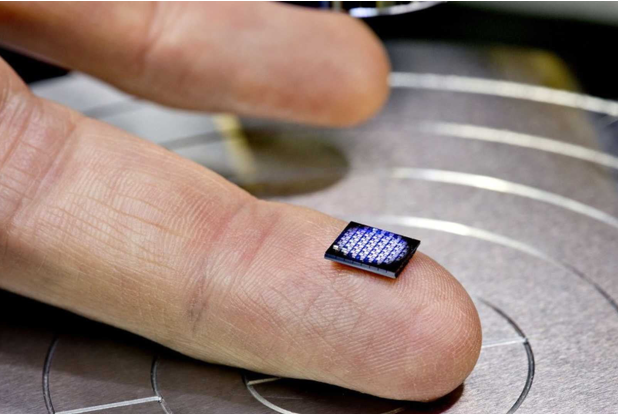
By Heather Hamilton, contributing writer
IBM sought to prove that bigger isn’t always better at the IBM Think 2018 conference, an IBM-hosted conference held March 9−22, by presenting a selection of projects called “5 in 5,” which it claims could “change our lives in the next five years.” One of the standouts was a computer that measures only 1 x 1 mm and costs less than 10 cents to produce.
The computer is half the size of the IBM’s last miniature computer, which measured 2 mm. IBM’s computer has a processor that boasts several hundred thousand transistors, SRAM memory, a communications unit with an LED and photodetector that talks with the world, and is powered by a photovoltaic cell.
The computer has the same power as the x86 chip, out in 1990. They’ve been fairly quiet regarding additional details, including the name, but its presence in the “5 in 5” grouping suggests that we may know more soon.
According to Mashable , it works with blockchain and will act as a data source for blockchain applications and can perform AI tasks like data sorting. It will also help track shipments, detect fraud and theft, and identify noncompliance when it is used as a crypto-anchor. Its size is also likely to make it very usable in a variety of wearable devices and even ingestible ones designed to enter the body to provide medical information.
IBM says that this marks the beginning of such work. “Within the next five years, cryptographic anchors — such as ink dots or tiny computers smaller than a grain of salt — will be embedded in everyday objects and devices,” writes Arvind Krishna, head of research at IBM in a blog post.
IBM’s researchers at the Thomas J. Watson Research Center in Yorktown Heights, New York, will provide details in a yet-to-arrive paper, but IBM has issued a vague outline of the schematics, which shows 64 motherboards. Note that the featured photograph does not show just one computer but the 64 motherboards and two tiny computers in the left corner. ZDNet also reports that the computers may be available to customers are soon as 18 months from now.
“These technologies pave the way for new solutions that tackle food safety, authenticity of manufactured components, genetically modified products, identification of counterfeit objects and provenance of luxury goods,” writes Krishna.
Advertisement
Learn more about Electronic Products Magazine





